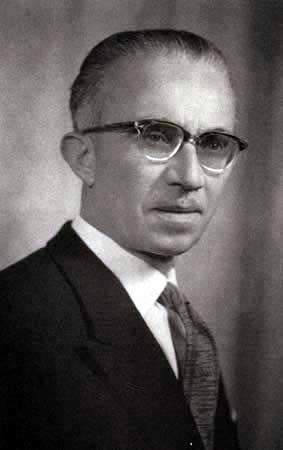Related Research Articles

The United Arab Republic, or simply the Arab Republic or Arabia, was a sovereign state in the Middle East from 1958 until 1971. It was initially a political union between Egypt and Syria from 1958 until Syria seceded from the union after the 1961 Syrian coup d'état. Egypt continued to be known officially as the United Arab Republic until 1971.

Gamal Abdel Nasser Hussein was an Egyptian politician who served as the second president of Egypt from 1954 until his death in 1970. Nasser led the Egyptian revolution of 1952 and introduced far-reaching land reforms the following year. Following a 1954 attempt on his life by a Muslim Brotherhood member, he cracked down on the organization, put President Mohamed Naguib under house arrest and assumed executive office. He was formally elected president in June 1956.
According to most scholars the history of modern Egypt dates from the start of Muhammad Ali's rule in 1805 and his launching of Egypt's modernization project that involved building a new army and suggesting a new map for the country, though the definition of Egypt's modern history has varied in accordance with different definitions of modernity. Some scholars date it as far back as 1516 with the Ottomans' defeat of the Mamlūks in 1516–17.
As a result of the Syrian Civil War since 2012, there are at least two flags used to represent Syria, used by different factions in the war. The incumbent government of the Syrian Arab Republic led by the Ba'ath Party uses the red-white-black tricolour originally used by the United Arab Republic, while Syrian opposition factions such as the Syrian National Coalition use the green-white-black tricolour known as the ''Independence flag'', first used by Mandatory Syria.

The occupation of the Gaza Strip by the United Arab Republic refers to the time period in which the present-day Palestinian territory known as the Gaza Strip was occupied by Egyptian forces of the United Arab Republic from 1949 to 1967. The Egyptian occupation of Gaza began with the inception of the territory in 1949 following the First Arab–Israeli War, and ended after Egypt's defeat to Israel in the Third Arab–Israeli War of 1967, after which the Israeli occupation of the Gaza Strip commenced. Egyptian rule in Gaza before the 1967 war had been continuous with the exception of a brief period from October 1956 to March 1957, when Israel invaded and occupied Gaza as well as the Sinai Peninsula during the Suez Crisis.

Nazim al-Qudsi, was a Syrian politician who served as President of Syria from 14 December 1961 to 8 March 1963.

The coat of arms of Egypt is known as the Republican Eagle or Egyptian Golden Eagle, is a heraldic golden eagle, facing the viewer's left (dexter). The eagle's breast is charged with an escutcheon bearing the red-white-black bands of the flag of Egypt rotated vertically, whilst the eagle's talons hold a scroll bearing the official name of the state written in Kufic script. The earliest version of the Eagle of Saladin was that used as the flag of Saladin, the first Sultan of Egypt, whilst the modern version of the eagle was adopted during the Egyptian Revolution of 1952. Subsequently, the modern design of the Eagle of Saladin was adopted as the coat of arms of numerous other states in the Arab World, namely the United Arab Republic, North Yemen, Iraq, South Yemen, the Libyan Arab Republic, and Palestine. The current eagle was modified in 1984 to its present form.

The Federation of Arab Republics was an unsuccessful attempt by Muammar Gaddafi to merge Libya, Egypt and Syria in order to create a unified Arab state. Although approved by a referendum in each country on 1 September 1971, the three countries disagreed on the specific terms of the merger. The federation lasted from 1 January 1972 to 19 November 1977.

Salah al-Din al-Bitar was a Syrian politician who co-founded the Arab Ba'ath Party with Michel Aflaq in the early 1940s. As students in Paris in the early 1930s, the two formulated a doctrine that combined aspects of nationalism and socialism. Bitar later served as prime minister in several early Ba'athist governments in Syria but became alienated from the party as it grew more radical. In 1966 he fled the country, lived mostly in Europe and remained politically active until he was assassinated in Paris in 1980 by unidentified hitmen linked to the Assad regime.

The current Constitution of the Syrian Arab Republic was adopted on 26 February 2012, replacing one that had been in force since 13 March 1973. The current constitution delineates the basic function of that state's government. Among other things, it determines Syria's character to be Arab, democratic, and republican. Further, in line with pan-Arab ideology, it describes the country as a region of the wider Arab world and its people as an integral part of the Arab nation.

The Constitution of the Arab Republic of Egypt was the former constitution of Egypt. It was adopted on 11 September 1971 through a public referendum. It was later amended in 1980, 2005, and 2007. It was proclaimed to update the democratic representative system in assertion of the rule of law, independence of the judiciary, and party plurality. On 13 February 2011, the Constitution was suspended following the resignation of President Hosni Mubarak as a result of the 2011 Egyptian Revolution. On 30 March 2011, it was "effectively voided" after a new provisional constitution was passed by the country's ruling Supreme Council of the Armed Forces. It has since been superseded by the Egyptian Constitution of 2012 and the current Egyptian Constitution of 2014.

The Constitution of Egypt has passed over a long period of evolution from the liberal constitution of 1923 to the contemporary constitution.
The Provisional Constitution of the United Arab Republic or the Constitution of 1958 was the constitution for the short-lived political union between Egypt and Syria known as the United Arab Republic (UAR). This 74-article provisional constitution was formulated on 5 March 1958 and lasted until the Syrian coup d'état of 28 September 1961.

The Hashemite Arab Federation was a short-lived country that was formed in 1958 from the union between the Hashemite Kingdoms of Iraq and Jordan. Although the name implies a federal structure, it was de facto a confederation.

The vice-president of the Arab Republic of Egypt is a senior official within the Egyptian government.
The History of Republican Egypt spans the period of modern Egyptian history from the Egyptian Revolution of 1952 to the present day, which saw the toppling of the monarchy of Egypt and Sudan, the establishment of a presidential republic, and a period of profound economic, and political change in Egypt, and throughout the Arab world. The abolition of a monarchy and aristocracy viewed widely as sympathetic to Western interests, particularly since the ousting of Khedive Isma'il Pasha, over seven decades earlier, helped strengthen the authentically Egyptian character of the republic in the eyes of its supporters.
The Arab Cold War was a period of political rivalry in the Arab world from the early 1950s to the late 1970s as part of the broader Cold War. The generally accepted beginning of the Arab Cold War was the Egyptian revolution of 1952, which ultimately led to Gamal Abdel Nasser becoming President of Egypt in 1956. Thereafter, newly established Arab republics defined by revolutionary secular nationalism, and largely drawing inspiration from Nasser's Egypt, were engaged in political rivalries of varying degrees of ferocity with conservative traditionalist Arab monarchies, led chiefly by Saudi Arabia. The approximate end point of this period of internecine rivalry and conflict is generally viewed as being the 1979 Iranian Revolution, which culminated in the installation of Ayatollah Ruhollah Khomeini as the leader of Iran's theocratic government. Thereafter, the bitterness of intra-Arab strife was eclipsed by a new era of Arab-Iranian tensions.
The Constitution of 1956 was the constitution of Egypt from 1956 to 1958. It promulgated on 19 January 1956 was implemented by referendum on 23 June, with Gamal Abdel Nasser being elected president simultaneously. It replaced a 1953 provisional constitution which in turn had replaced the Constitution of 1923 following the revolution of 1952. With the 1958 political union of Egypt and the Syrian Republic as the United Arab Republic, the 1956 Constitution was superseded by the Provisional Constitution of the United Arab Republic.

Sami Droubi was a Syrian politician, career diplomat, writer, translator, university professor and philosopher. He worked as a Syrian diplomat throughout the 1960s, serving, succession, as the Syrian ambassador to Brazil, Morocco, Yugoslavia, and Egypt and the Arab League, Spain and the Holy See. He briefly served as Education Minister in 1963. He also translated numerous literary works into Arabic.
References
- 1 2 3 Harvey Henry Smith. Area Handbook for the United Arab Republic (Egypt). U.S. Government Printing Office, 1970. p. 196–97.